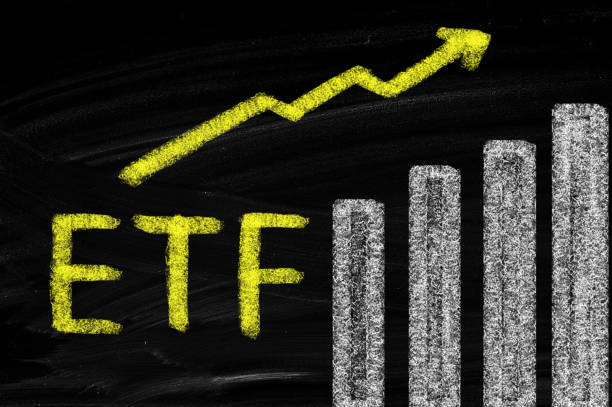When it comes to trading, there are a few different types of investments that you can make. One of the most popular is an ETF or exchange-traded fund. ETFs are a type of investment that track an index, such as the S&P 500 and offer investors a way to diversify their portfolios. But what does that mean for you? And more importantly, how do you trade them? We’ll break down everything you need to know about ETFs, including what they are, how they work and how to trade them.
What is an ETF, and how does it work?
ETF stands for Exchange Traded Fund, and it is an investment that tracks a basket of assets, such as stocks, bonds or commodities. They are traded on stock exchanges and can be bought and sold like stocks. The price of an ETF fluctuates throughout the day as people buy and sell the underlying assets.
ETFs, offer investors a way to diversify their portfolios without investing in each asset. For example, if you wanted to invest in the S&P 500, you could buy an ETF that tracks the index, and this would give you exposure to all 500 companies without having to buy each one individually.
There are thousands of ETFs available, so there’s sure to be one that meets your investment goals. Whether you’re looking for exposure to a specific industry or region or simply trying to diversify your portfolio, there’s an ETF out there for you.
Why would you want to trade ETFs rather than stocks or other investment vehicles?
There are a few reasons why you might want to consider trading ETFs
First, ETFs offer a way to diversify your portfolio without investing in each asset. It can help you mitigate risk and avoid putting all your eggs in one basket.
Second, ETFs tend to be cheaper than stocks or mutual funds. Because they’re not actively managed, there are no fees for research or portfolio management.
Lastly, ETFs offer greater flexibility when it comes to trading. You can buy and sell ETFs just like stocks, but you can also purchase them through brokerage accounts that offer commission-free trades.
What are the benefits of trading ETFs compared to other investment options available today?
One of the most significant benefits of investing in an ETF is that it offers investors a way to diversify their portfolios. When you invest in an ETF, you are essentially buying a piece of every asset included in the fund. If one asset falls in value, your investment is still diversified because you also own other assets.
Another benefit of ETFs is that they are typically lower costs than other investments. Because they are not actively managed, there are no research or portfolio management fees.
What are some of the risks associated with trading ETFs?
Like any investment, there’re risks associated with trading ETFs. One risk is that the value of the underlying assets can go down. If you invest in an ETF tracking the S&P 500, and the index falls, your investment will lose value.
Another risk is that you may not have as much control over your investment as you would if you owned the underlying assets directly. For example, if you invest in an ETF tracking the S&P 500, you will not be able to choose which stocks are included in the fund.
Lastly, fraud is always risky when trading any investment product. It helps if you research and only trade with reputable brokers to avoid getting scammed.
What should you consider before trading ETFs?
Before you begin trading ETFs, it’s essential to understand what you’re getting into. Here are a few things to consider
Your investment goals- What are you hoping to achieve by investing in ETFs? Are you looking to diversify your portfolio or get exposure to a specific industry or region? Read more here.
Your risk tolerance- How much risk are you willing to take on? Remember that the value of your investment can go up or down, so you should only invest what you’re comfortable losing.
The fees- Make sure to compare the fees charged by different brokers before choosing one to trade with. Some brokers charge commission on trades, while others do not.
Your experience level- If you’re new to investing, you may want to consider working with a broker who can offer guidance and advice. However, if you’re more experienced, you may be comfortable trading on your own.


